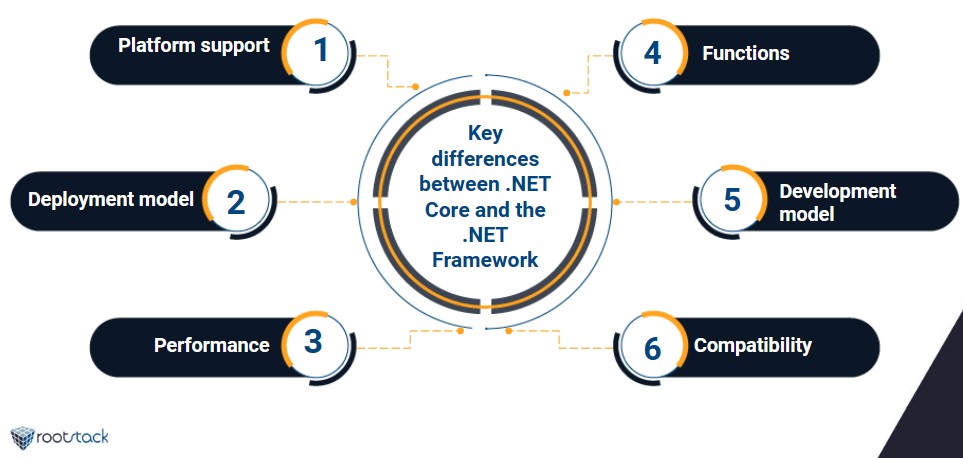Building eCommerce Apps with .NET: Best Practices and Strategies
March 05, 2024
Table of contents
Quick Access
In the world of digital commerce, creating robust and scalable eCommerce applications is crucial for businesses looking to succeed in the competitive online market. Harnessing the power of .NET, a versatile and widely used framework developed by Microsoft, provides developers with a solid foundation for creating feature-rich eCommerce platforms.
Although .NET is not the most popular technology for creating e-commerce platforms, according to numbers shared by Statista where they place WooCommerce in first place with 39% of use in the market, it still has multiple benefits for shopping pages online.
In this article, we will explore best practices and strategies for building eCommerce applications with .NET, allowing developers to deliver exceptional online shopping experiences to customers.
Best practices for creating an e-commerce platform with .NET
Choosing the right technology stack
Evaluate your eCommerce project requirements and choose the right technology stack within the .NET ecosystem. Options may include ASP.NET Core for backend development, Entity Framework Core for database management, and Blazor or Razor Pages for frontend interfaces.
Consider factors such as performance, scalability, security, and compatibility with third-party integrations when selecting components for your eCommerce application.
Design of a scalable architecture
Implement a modular and scalable architecture that can accommodate the growth of your eCommerce platform over time. Use design patterns such as MVC (Model-View-Controller) or Microservices to separate concerns and promote maintainability. Opt for cloud-based solutions such as Microsoft Azure to host your eCommerce application, allowing for seamless scalability and high availability.
“The Azure cloud platform consists of more than 200 cloud products and services designed to help you bring new solutions to life, to solve today's challenges and create the future” is how they explain this technology in their official documentation.

Implementing secure authentication and authorization
Prioritize security by implementing strong authentication and authorization mechanisms to protect sensitive customer data and transactions. Use industry-standard protocols such as OAuth 2.0 or OpenID Connect for user authentication.
Employ role-based access control (RBAC) to define granular permissions for different user roles within the eCommerce platform, ensuring that only authorized users can perform specific actions.
Performance optimization
Optimize the performance of your eCommerce application to deliver a fast and responsive shopping experience to users. Employ techniques such as caching, asynchronous programming, and lazy loading to reduce latency and improve page load times.
Use content delivery networks (CDNs) to distribute static assets, such as images, CSS, and JavaScript files, closer to users, reducing network latency and improving overall performance.
Implementation of search and product catalog functions
Develop robust search functionality that allows users to quickly find products based on various criteria, such as keywords, categories, attributes, and filters.
Implement a flexible product catalog management system that allows administrators to easily add, update, and organize products within the eCommerce platform. Leverage features such as product variants, attributes, and pricing options to deliver a diverse product offering to customers.

Integration of payment gateways and payment process
Integrate with popular payment gateways like PayPal, Stripe, or Authorize.Net to facilitate secure online transactions. Implement features like one-click checkout, guest checkout, and multiple payment methods to streamline the checkout process for users.
Ensure compliance with Payment Card Industry Data Security Standard (PCI DSS) requirements to protect payment card data and maintain trust with customers.
“The payment gateway market was significantly larger in the United States than in other parts of the world, according to a data model for 2023. This model comes from Extrapolate's "Global Payment Gateway Market (2023-2032)" report. Please note that only certain individual countries had figures available. No figures were provided, for example, for Indonesia, Hong Kong, Nigeria, or Australia” they report in Statista, which makes this step one that should not be dismissed.
Deploy analytics and personalization
Incorporate analytics tools like Google Analytics or Microsoft Application Insights to track user behavior, monitor website performance, and gain insight into customer preferences and trends.
Leverage data-driven personalization techniques to deliver targeted recommendations, promotions, and content to users based on their browsing history, purchasing behavior, and demographic information.
Building eCommerce applications with .NET requires careful planning, following best practices, and focusing on delivering exceptional user experiences.
By following the strategies outlined in this article, developers can create scalable, secure, and feature-rich e-commerce platforms that drive business growth and customer satisfaction in the digital marketplace. By embracing the versatility and power of .NET, businesses can stay ahead and succeed in the ever-evolving world of online commerce.
We recommend you on video
Related Blogs
How to Create a Mobile-Friendly Ecommerce Website: Tips and Best Practices
Ecommerce Payment Options: A Comparison Guide for Online Store Owners
How can you add a video banner to Shopify?

Top 10 Businesses Using Magento for Ecommerce Websites
React Native for eCommerce: Building High-Performance Shopping Apps

